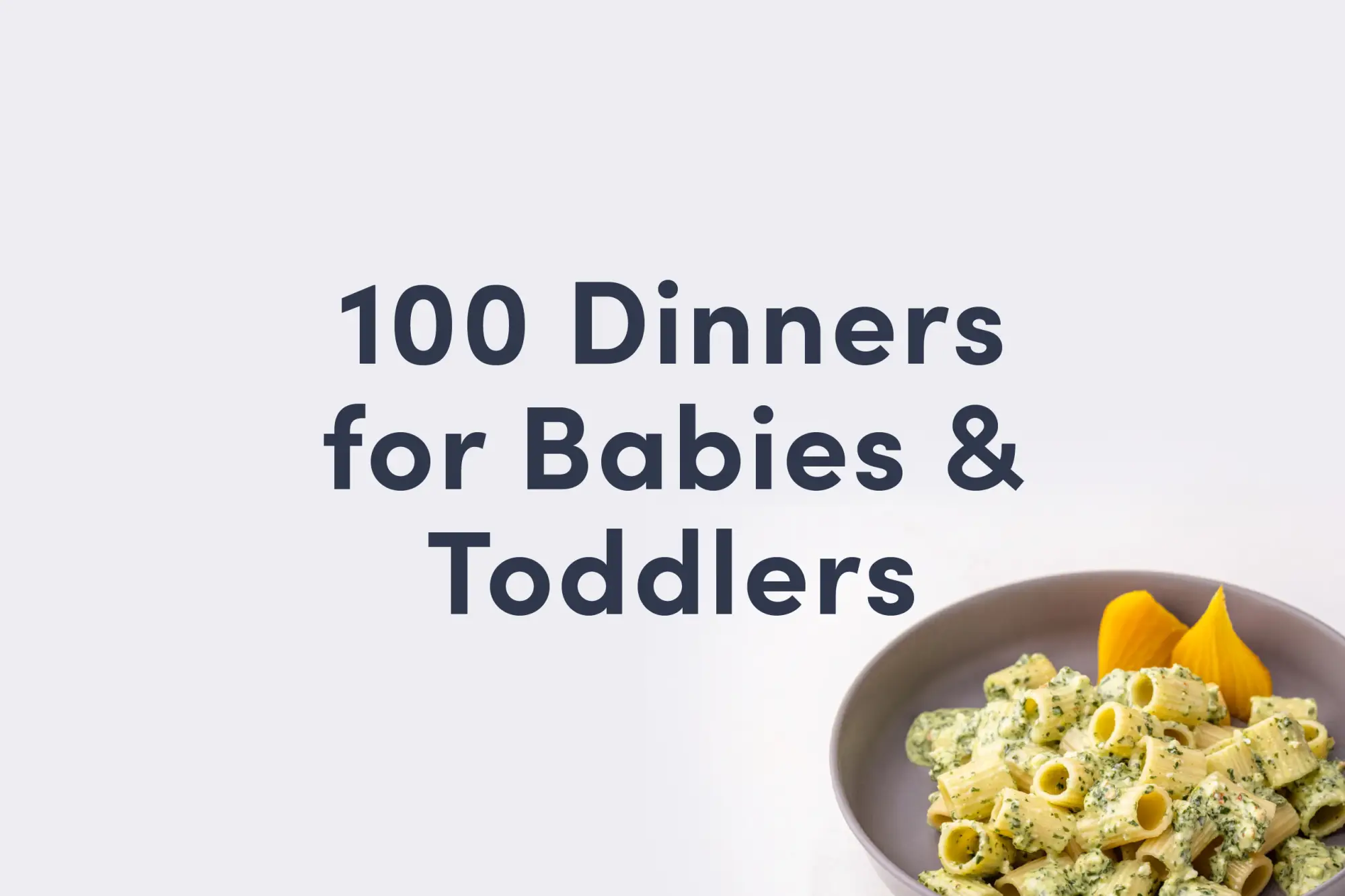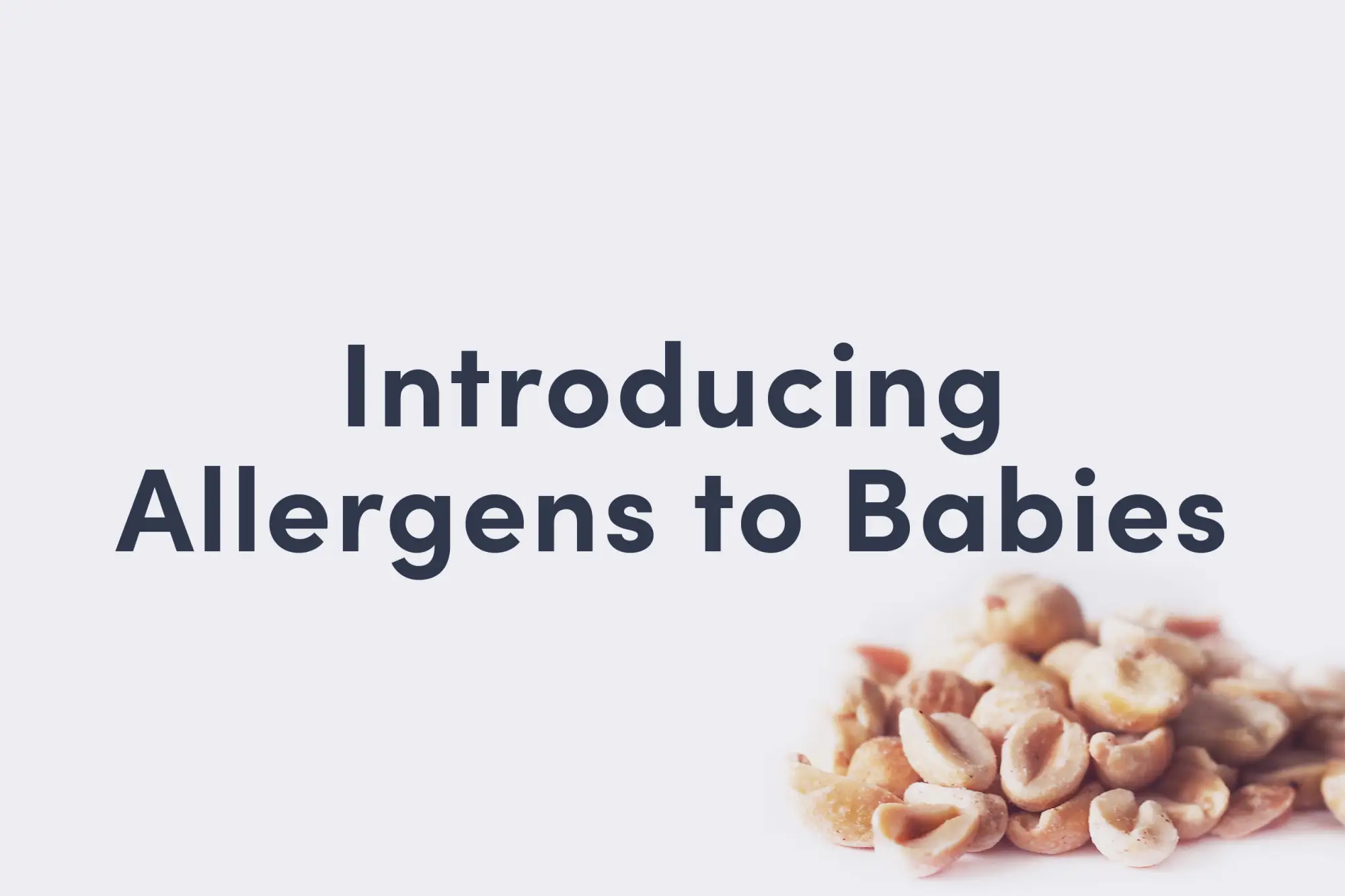Shrimp
Shellfish
Age Suggestion
6 months
Iron-Rich
No
Common Allergen
Yes
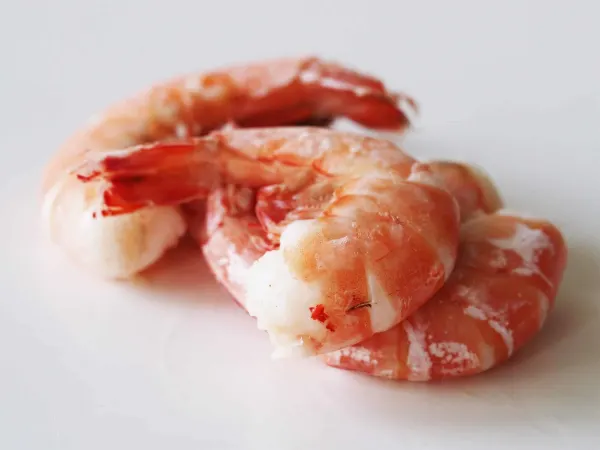
Warning
Shrimp are a top choking hazard for babies and older children alike. Read our suggestions for how to safely serve shrimp according to a child’s age and eating ability.
When can babies have shrimp?
Shrimp, when prepared in an age-appropriate way to reduce choking risk, may be introduced as soon as baby is ready to start solids, which is generally around 6 months of age. Make sure shrimp is fully cooked to reduce the risk of foodborne illness, to which babies are more susceptible.
Shrimp are crustaceans, part of the sprawling shellfish family that also includes crabs, lobsters, and prawns, among others. There are countless species of shrimp from oceans and bodies of freshwater around the world. Some are tiny, and others are quite large; some are reddish-pink and others ruddy brown in color.
Is shrimp healthy for babies?
Yes. Shrimp are an excellent source of protein, omega-3 fatty acids, and essential nutrients including vitamins B6 and B12 and minerals like calcium, selenium, iodine, and zinc. Together, these nutrients support baby’s rapid growth, neurodevelopment, and heart and immune health. In addition, shrimp tend to be lower in mercury than other seafood.
Some frozen shrimp, as well as canned, smoked, pickled, dried, and powdered shrimp, and other processed products like shrimp paste and shrimp chips, can be high in sodium. While offering a taste is not a cause for concern, wait to regularly share these forms of shrimp until baby is older.
Should I be worried about the cholesterol content of shrimp?
No. Although shrimp is rich in cholesterol, the cholesterol from food actually has little impact on overall blood cholesterol levels. And in fact, shrimp offers lots of omega-3 fatty acids, which can help the body maintain healthy cholesterol and lipid levels.
Are shrimp high in sodium?
They can be, but it depends on the type and method of preparation. Fresh shrimp are typically lower in sodium than dried, fermented, frozen, or canned shrimp products.
Is shrimp a common allergen?
Yes. Shrimp is a type of crustacean shellfish, which is classified as a Global Priority Allergen by the World Health Organization. Babies with a shrimp allergy are more likely to experience reactions to other shellfish in the crustacean family (crawfish, crab, lobster, prawn, etc.) and, to a lesser degree, the mollusk family (clam, mussel, octopus, oyster, scallop, snail, squid, etc.).
Interestingly, crustacean shellfish allergy commonly develops in adulthood, and for those who develop it in childhood, most will not outgrow it. If you suspect baby may be allergic to shellfish, consult an allergist before introducing shrimp.
Being allergic to shellfish doesn’t mean that an individual will also have a finned fish allergy, as they are not closely related. However, you may need to be careful about the risk of shellfish proteins being cross-contaminated with finned fish and other seafood, as they are often prepared in the same facilities using shared tools and cooking materials.
Shrimp may be preserved with sulfites. While sulfites are not a common allergen, certain individuals, particularly those with asthma, can have allergy-like reactions to added sulfites. If sulfites are a concern, avoid ingredients such as sulfur dioxide, potassium bisulfate, potassium metabisulfite, sodium bisulfite, sodium metabisulfite, and sodium sulfite to name a few.
As you would do with all new allergens, introduce shrimp by serving a small quantity at first, and watch closely for signs of any adverse reaction. If all goes well, gradually increase the quantity over future meals.
Once successfully introduced into the diet, common food allergens like crustacean shellfish should be ingested regularly (at least once weekly, if possible) throughout the toddler years. However, as the crustacean shellfish are closely related, it is not necessary to serve each different variety of shellfish separately - simply serve what is most accessible to you locally.
Is shrimp a choking hazard for babies?
Yes. Shrimp has a rubbery, firm texture and round shape, qualities that increase the risk of choking. To reduce the risk, prepare and serve shrimp in an age-appropriate way. As always, make sure to create a safe eating environment and stay within an arm’s reach of baby at mealtime. For more information on choking, visit our sections on gagging and choking and familiarize yourself with the list of common choking hazards.
Learn the signs of choking and gagging and more about choking first aid in our free guides, Infant Rescue and Toddler Rescue.
Videos
Can babies have canned shrimp?
Yes, in small amounts, although most canned shrimp are very high in sodium. Make sure to cut the shrimp according to the child’s age and eating ability.
When can babies eat fried shrimp?
In moderation after the first birthday, although a taste here and there before then is fine, as long as they are cut for the child’s age to reduce choking risk.
When can babies or toddlers have raw shrimp?
It’s dangerous at every age. Never serve uncooked shellfish to an infant. Doing so greatly increases the risk of food borne illness, and babies are more susceptible to severe symptoms. Whether to serve raw shrimp to a toddler or older child is a personal decision for which you must calculate risk. Raw shrimp poses a high risk of foodborne illness, which can lead to harmful infections for babies, children, and adults alike. The risk of severe illness is even higher in individuals with complex medical backgrounds, on stomach acid reducing medications, and/or who are immunocompromised.
How do you serve shrimp to babies?
Every baby develops on their own timeline, and the suggestions on how to cut or prepare particular foods are generalizations for a broad audience.
6 months old +:
Finely chop well-cooked shrimp and mix into a soft, scoopable food. Alternatively, offer large, soft shrimp cakes, dumplings, or patties, or cook congee, porridge, or other grains with dried shrimp that have been rehydrated and finely chopped. You can also offer a large, well-cooked shrimp (shell and tail removed) cut lengthwise in half, making sure there are no round segments. Avoid cutting shrimp into rounds or any way that retains its cylindrical shape.
9 months old +:
Cut well-cooked shrimp lengthwise so it is no longer round, then chop into small pieces. You can serve these small, thin pieces on their own or as part of a meal. Alternatively, serve cooked shrimp that has been finely diced, shredded, or cooked into shrimp cakes. You can also continue to offer large, well-cooked shrimp (shell and tail removed) cut lengthwise in half, making sure there are no round segments. If baby succeeds in biting off a big piece, take a deep breath, stay calm, and give the child a chance to work with the food. In most cases, if the piece of food is too big, babies spit it out or the gag reflex helps thrust it forward and out of the mouth. Avoid cutting shrimp in rounds or any way that retains its cylindrical shape.
18 months old +:
Cut cooked shrimp lengthwise and chop, making sure that the shrimp is no longer round. Alternatively, offer shrimp cakes and patties or shrimp dumplings. Continue to cut shrimp lengthwise until you feel the child is taking accurate bites and is thoroughly chewing food. At this age, you may also serve tiny varieties of shrimp (often available canned or jarred). When offering these tiny shrimp, practice by offering one at a time and coach the child to chew each one thoroughly before offering another.
3 years old +:
Cut the shrimp lengthwise so that it is no longer round, or serve shrimp cakes and patties or shrimp dumplings.
At this age, if the child has developed mature chewing skills (taking accurate bites, not overstuffing their mouths, chewing food thoroughly before swallowing, etc.), consider offering a whole shrimp. Start with a large, well-cooked shrimp (shell and tail removed) so that you can coach how to take small bites. If you’d like to further reduce choking risk, you can cut off the rounded end before offering to the child. Show the child how to remove the tail, if it is still attached. Then, demonstrate how to take a small bite of the shrimp with your front teeth. Then, offer a second whole, large shrimp to the child and let them follow your lead, coaching them to take small bites and chew thoroughly before swallowing. If the child shoves the whole thing in their mouth, refrain from gasping or yelling. Remain calm and encourage them to spit the food out and try again, if you feel comfortable. If the child struggles in listening to your directions, consider stopping the meal, practicing more with shrimp that have been halved lengthwise, and trying again with whole shrimp when the child is a little older.
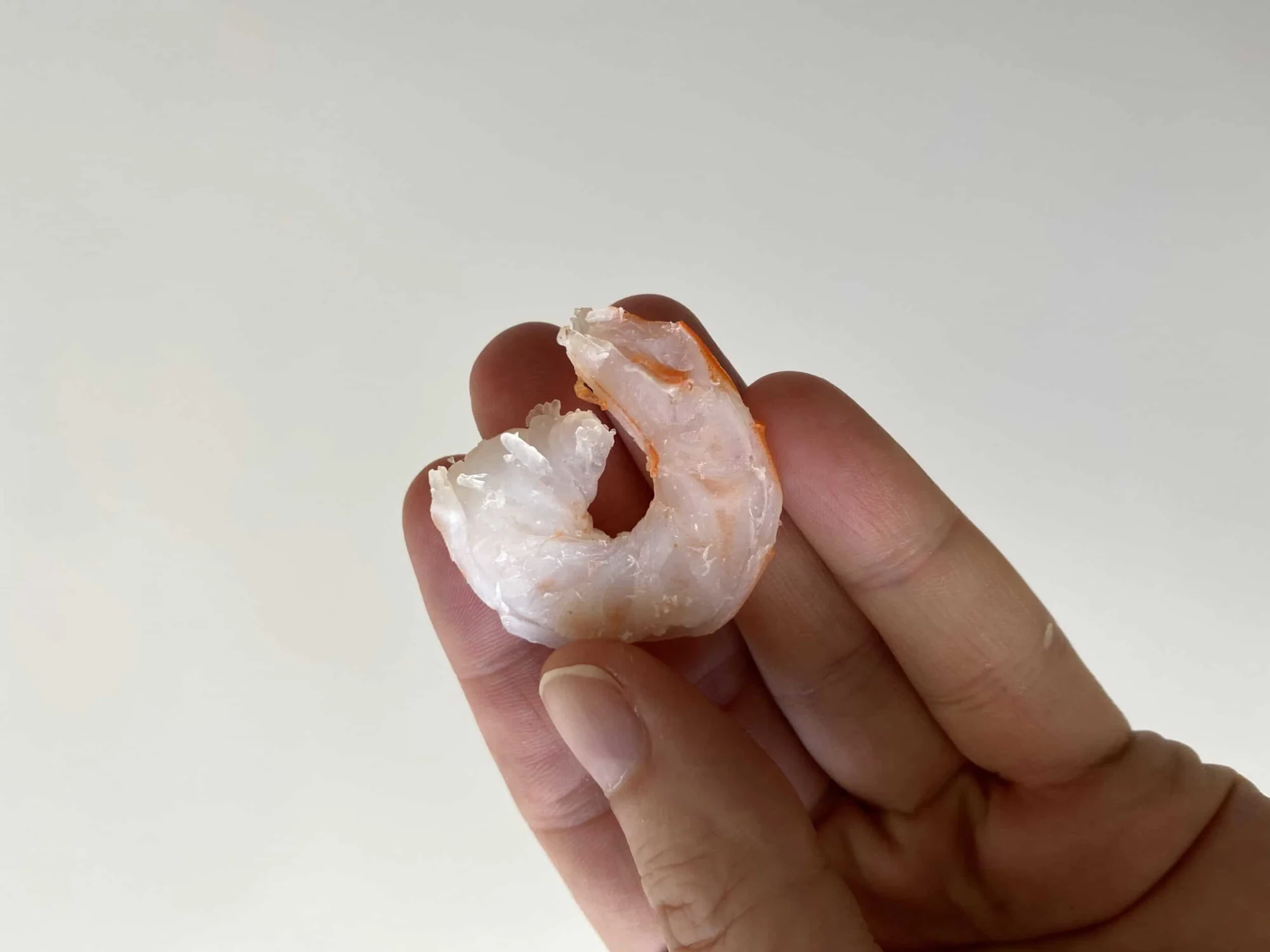
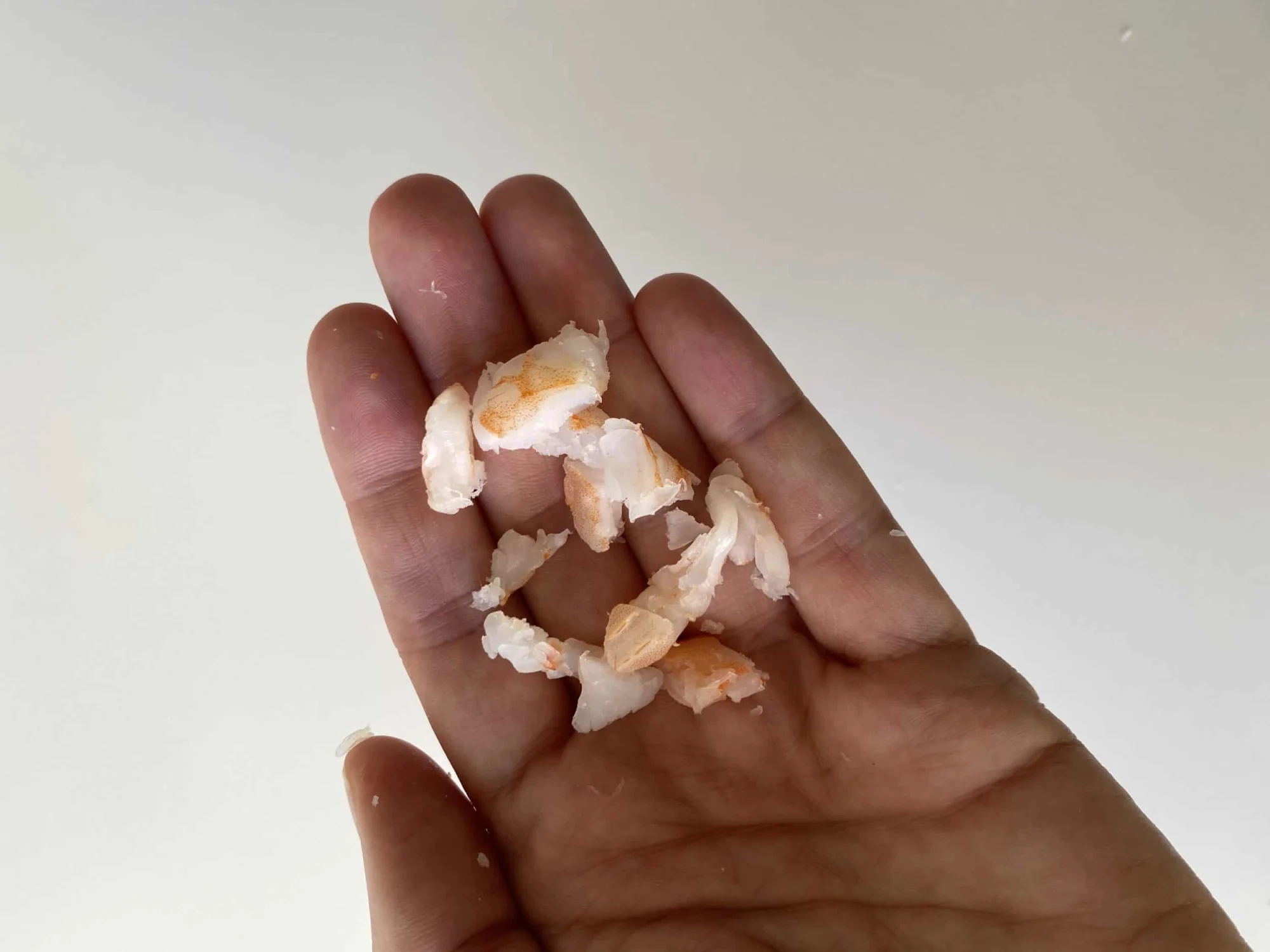
Do NOT serve shrimp this way. An example of shrimp cut into a high choking risk shape which is very dangerous and should never be served.
For more, see the Solid Starts Fish guide—the world’s only guide to seafood for babies and toddlers younger than age 2.
Written by
Expert Tips Delivered to Your Inbox
Sign up for weekly tips, recipes and more!
The content offered on SolidStarts.com is for informational purposes only. Solidstarts is not engaged in rendering professional advice, whether medical or otherwise, to individual users or their children or families. No content on this site, regardless of date, should ever be used as a substitute for direct medical advice from your doctor or your medical or health professional, nutritionist, or expert in pediatric feeding and eating. By accessing the content on SolidStarts.com, you acknowledge and agree that you are accepting the responsibility for your child’s health and well-being. In return for providing you with an array of content “baby-led weaning” information, you waive any claims that you or your child may have as a result of utilizing the content on SolidStarts.com.


